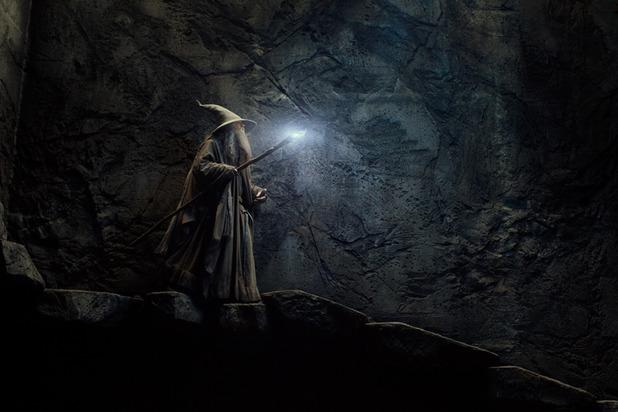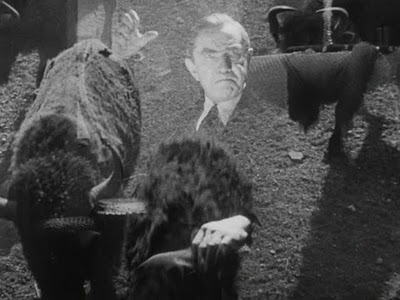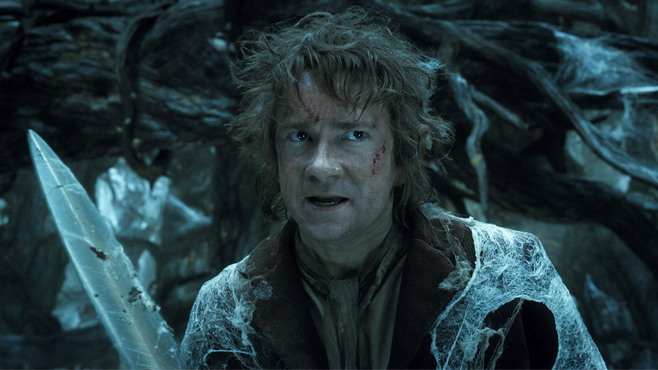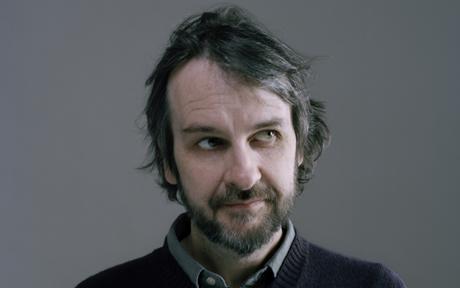
And I thought I had mixed feelings about the first Hobbit film! I’ve seen Peter Jackson’s second installment of his Hobbit Trilogy, The Hobbit: The Desolation of Smaug, three times now and I still don’t know what to think about it. As in the first film, Jackson and his Weta wizards run amok with Tolkien’s beloved novel, cramming cartoony action scenes, bonkers sub plots and alternative character motivations in every nooks and cranny. The result is a film that’s both immensely enjoyable as cinematic entertainment and extremely insulting as an adaptation. I actually walked out of the theater the first time I saw it. It was late in the film, the characters had all strayed as far away from the plot as they possibly could and Thorin was shouting at Bilbo to “pull the lever!” Visions of a drug-addled Bela Lugosi babbling nonsense in an armchair filled my head and I fled, not after hurling a few childish insults at the screen.

“PULL THE STRING!!!”
And yet, I was intrigued enough to go back twice; I really admire Peter Jackson as a filmmaker, and it’s not every day one of his films is playing in cinemas.Words fail me as I try to sum up my thoughts on this glorious, messy, obnoxious film, so instead I’ll just tell you what I liked and what I found to be desolation.
What I liked:

As in the first Hobbit, the art design here is exquisite, and this film gets to show off a lot more than it’s predecessor. We see an ancient tangled forest, intricately detailed giant spiders, a beautiful cavern kingdom and a rustic, run-down wooden city on a lake. Aside from a few obvious set-to-location transitions, everything is excellently rendered and the set and lighting design is incredible. Jackson and his team are craftsmen and it’s a joy to see what they can accomplish completely unfettered from budget constraints or technical limitations.
Though the plot deviates wildly from Tolkien’s work, there are some noteworthy exceptions. The Spider attack scene, though heavily rushed and rudely interrupted by elves, stays mostly true to the book and is pretty thrilling. The talking spiders are particularly faithful and I couldn’t help thinking of my Dad reading this scene to me when I was little and doing the voices all high pitched and hissing just like they are in this film. Jackson did get a bit tricksy, making the Spider’s language only understandable to Bilbo when he puts on his magic ring, but it’s a clever deviation and reminiscent of elements of Norse mythology, so I’ll give it a pass. The Smaug and Bilbo scene is also fairly faithful to Tolkien’s text, up to a point, even if said dragon and burglar are gallivanting about in the treasure rather than staying put. The Arkenstone figures too prominently, and the scene eventually breaks down into revision, but for a few glorious moments, Tolkien’s clever dialog shines through.
Much has been said about the additions that Jackson took from Tolkien’s other writings on Middle Earth. It’s a particularly favored approach by film critics who haven’t read a page of Tolkien. They use it to cover a multitude of Jackson and his fellow screenwriters’ adaptation sins. I’ve recently re-read both The Hobbit and said additional texts, and the argument is mostly rubbish. One wonders why film critics can’t pick up a book once and a while. What Jackson did actually borrow he distorted out of recognition, excepting Gandalf’s quest to confront the Necromancer. Tolkien wrote little on the subject and mostly left it up to his reader’s imagination, so Jackson’s thrilling take is actually a welcome, if overlong and slightly pandering addition. It’s a lot of fun to see our old friend Gandalf play magical detective, wandering though ancient ruins and muttering incantations. Sir Ian McKellen is as twinkly-eyed and wonderful as ever as the old wizard. I didn’t even mind that Radagast tagged along this time. It seems Jackson took a page from George Lucas’s book and toned down the most hated character from his previous film.
Lastly, there was one addition in this film that (gasp!) I actually liked. Tauriel is a ridiculous character who was added simply to play into the current fad of female fantasy characters that kick butt. Unlike Tolkien’s lone fighting female character Éowyn from Lord of The Rings, Tauriel is not driven to combat out of desperation. Instead, she’s the captain of the Mirkwood elven guard, the leader of a force of fighting men. It makes zero sense in Tolkien’s world, a world in which there is a distinct division between the roles of men and women. That being said, there’s a scene in which she explains her love of starlight to a dwarf. It’s the most beautiful, delicate scene in the film and really helps flesh out that part of Tolkien’s world. It helps that the dialog is lifted directly from Tolkien’s narrative prose. Sadly, Tauriel does a lot more damage than good.
What was Desolation:

Beorn is my favorite character in The Hobbit, and his existence in the narrative really fleshes out the broader world of Middle Earth that Tolkien otherwise mostly breezes through in his first novel on the subject. Beorn lives in a massive house in the wild that he built with his own two hands. He loves food and animals and has plenty of both. He names things because he likes the sound, and he’s kind and good-natured, if unpredictably fierce. In a sense, Beorn represents the cultures that told the stories that Tolkien was inspired by. He’s an homage to a simple, strong and imaginative people; a people that one gets the sense Tolkien longed to belong to. Jackson rushes through all these beautiful details and ends up with just a big gruff violent guy, not to mention a major deviation from the plot. What was once a clever scene displaying Galdalf’s social ingenuity and Beorn’s true nature becomes just one more action set piece. We also get a tacked-on back story that, though I guess it could be implied from the text, makes Beorn seem a lot less than what he’s supposed to be.
Jackson’s “character’s giving up in the 11th hour” syndrome is still annoyingly in full play. Just like Samwise before him, Thorin and his dwarven crew journey all the way to the lonely mountain and then throw a fit and abandon the quest the moment things get hard. We also get characters “staying behind,” kind of like when Bilbo and Sam got dragged halfway across Middle Earth in The Two Towers before Faramir suddenly realized his charcter would never do such a thing. But these are all to be expected in a Jackson film. and didn’t bother me that much.
What did bother me was Fan Fiction Legolas. Seriously, what was he doing here? I expected a cameo, but instead I got a super-charged action hero way more powerful than he ever was in The Lord of The Rings trilogy. He slays hundreds of orcs in ways that are, as my bow hunting brother-in-law aptly pointed out, pretty much impossible. Even if this wasn’t an adaptation–Legolas never makes an appearance in the book–the character dosn’t work. He comes out of nowhere with no development and falls directly to dolling out heaps of violence. One scene near the end of the film pits him against a massive orc in a quiet winter town in the moonlight. Visually it works well and it’s obviously a setup for a rematch in the major battle coming in part three, but it left me wondering: what am I watching right now? How does this have anything to do with the story? It’s as if one of the thirteen year old girls who had a major crush on Legolas back in 2001 and wrote a fan fiction version of The Hobbit with Legolas playing a major role as the dashing hero who constantly saves the day behind the scenes, forgot to delete her Xanga account, and Jackson found it and thought, “why the heck not?” Seriously, it’s that bad. I’ll admit, as a fan of the Lord of The Rings films it’s kind of fun to see Orlando Bloom back in the roll, but it just dosn’t work.
Peter Jackson was a very different filmmaker in 2001 when the Fellowship of The Ring came out. He employed a fairly classical style, mostly keeping the camera on a tripod and covering shots in long takes. Though that style is still somewhat at play, and I would hesitate to lump him with the “chaos cinema” crowd, something pretty major has changed. He now employs cameras that swoop every which way, and his action scenes are overly acrobatic, not helped by overly frenetic editing. It appears that physics have ceased to work in Middle Earth, and sets seem to be constructed more vertically than horizontally. There’s an awful lot of falling in this film. I think King Kong is mostly to blame for this shift in style. Released in 2005, Kong was a super indulgent film utilizing all of the tech tricks that Jackson and his team learned while making Lord of The Rings. It’s as fun and schlocky as a film about a giant gorilla should be, but I think the approach it took to action, hurtling the viewer down every cliff and right at every giant creature as it lunged, never went away at Weta. And while it certainly is a fun style, it causes the world of Tolkien to lose some of the levity and believability it had in Jackson’s first trilogy.
At the end of the day The Hobbit: The Desolation of Smaug is a deeply flawed film, both as a narrative and as an adaptation, and a very entertaining bit of cinema. By act three, when elves are healing dwarves with magic and duking it out WWF style, a dwarven king is riding in a wheelbarrow in lava and swinging on ropes while his men build a weaponized statue, and Smaug forgets he’s a deadly dragon and won’t stop monologing, I just have to shake my head and give up. Maybe Jackson will finally get it right in part three. Maybe he’ll stop supergluing action scenes to Tolkien’s already perfectly balanced tale. Maybe he’ll finally learn that more is sometimes less. Maybe.

